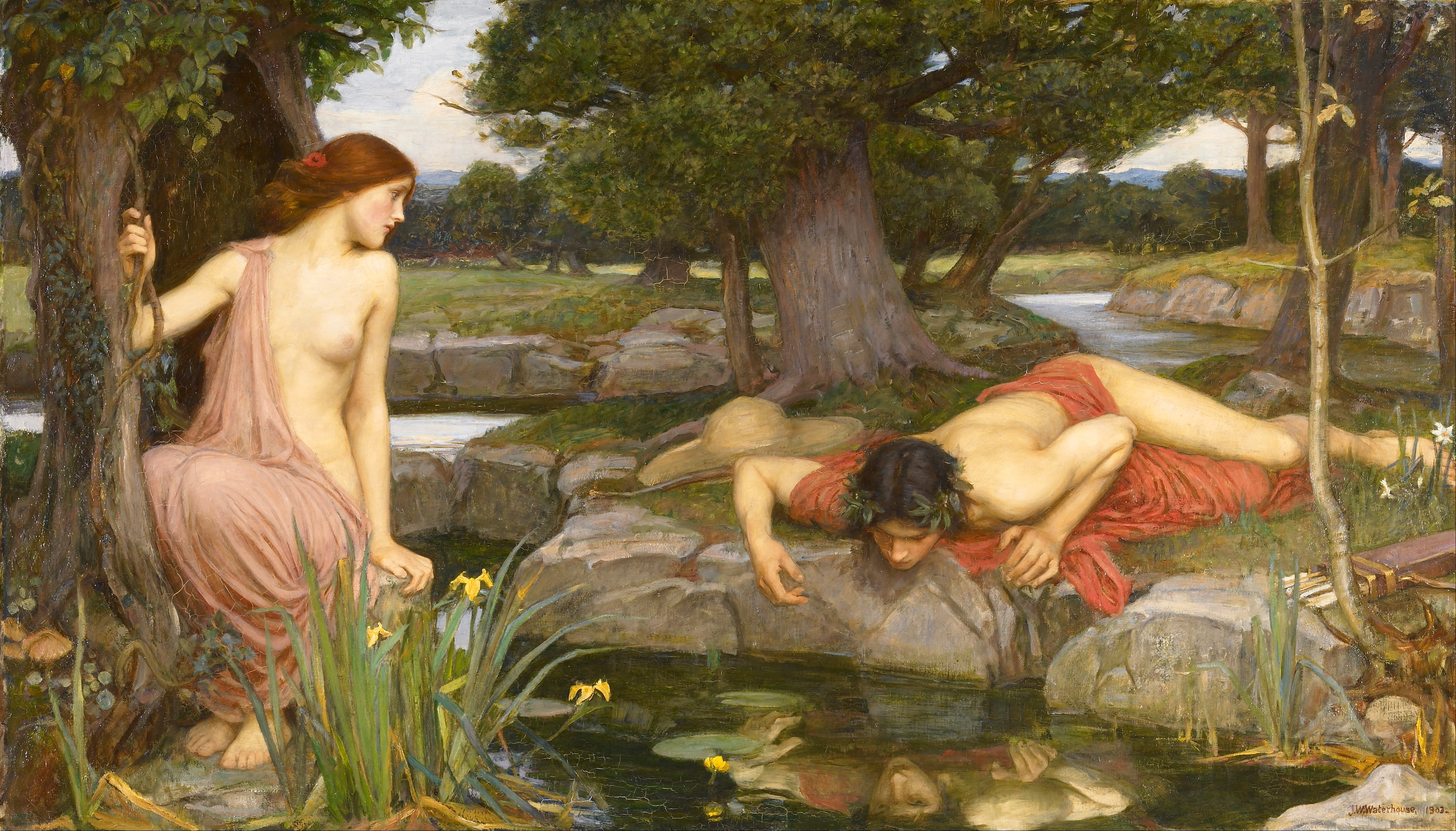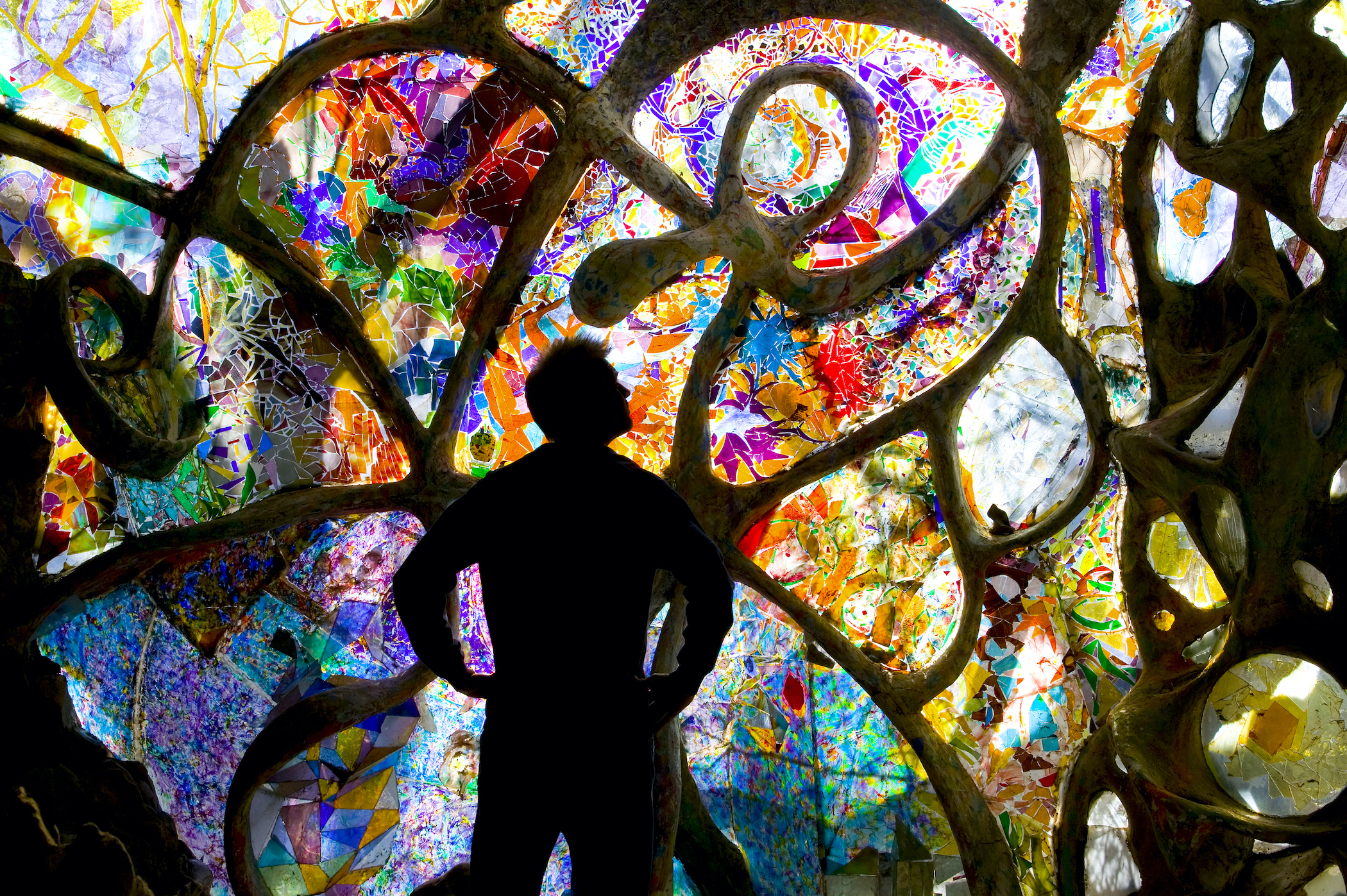It's tempting to think that the self is a “thing” that does the perceiving - that there's an essence of ‘you’ perched somewhere inside of your skull, looking out through the windows of your eyes and listening through your ears – the recipient of wave upon wave of sensory information that this self then ‘reads out’ to create an image of the world.
This, for me, is not the right way to think about the self. The self is not what does the perceiving. In fact, the self is itself a kind of perception. The philosopher David Hume called this the bundle theory of self. According to this view, the self is a collection of perceptions that we experience as being bound together and integrated – bundled – when in fact they can come apart in various ways.
There are many dimensions to being a self. There’s the experience of being a continuous person over time, with a set of memories, a name, a remembered past and an imagined future; and there’s also the experience of free will, of being the agent, the author of your thoughts and the cause of your own actions. But there are many more fundamental aspects to selfhood which have to do with your flesh and blood nature, with your body.
Experiencing our bodies from within
One aspect of selfhood is the experience of a particular object in the world as being our body. This is an essential part of what the experience of being “me” is all about. As well as experiencing our body as an object, selfhood also depends on experiences of the body from within: there is a continual barrage of sensory signals originating from inside the body that are reporting its physiological state – things like how the heart's beating, how the gut is doing, what blood pressure levels are like. These are perhaps the most important sensory signals for the brain, because they have to do with staying alive. The primary reason bodies have brains is to help them stay alive, to keep the heart beating, to keep blood pressure in the tight region that's compatible with not dying. So, the brain has to make sense of – perceive - the signals coming from the inside the body, as well as the more familiar sensory signals that reflect the external environment.
The idea here is that the brain uses exactly the same principles for ‘internal perception’ – or ‘interoception’ – that underlie the perception of the outside world. In both cases, perception is a kind of “best guess”, an active construction, but for interoception the contents of what we experience are now different. Visual experiences of the outside world are composed of objects, perhaps with colours and shapes, and arranged in spatial relations with respect to each other. But my experience of the ‘body from within’ isn't like that at all – I don't experience my internal organs, my heart and my lungs, as having shapes or particular locations. What I experience instead are moods and emotions: I experience how well, or how badly, my body is doing at the job of staying alive. That’s what perception of the body from within is for: its for the control and regulation of the body, not for finding out where things are, or what colour they are.
Studying the brain in a psychedelic state
The psychedelic state is a collection of unusual states of consciousness in which people's experiences of the world, and of themselves, are dramatically changed. Because these changes are so pervasive and so profound, understanding what happens in the brain in the psychedelic state offers a unique opportunity to understand how the brain generates and underpins conscious experiences of all kinds. People have been using psychedelics for hundreds, perhaps thousands of years, but their study in neuroscience is relatively recent. After some false starts in the previous Century, the last 20–25 years have seen a flowering of neuroscientific studies of the brain basis of the psychedelic experience. In particular, there have been an increasing number of brain imaging studies that try to get a picture of how the brain is changing when people have these pervasive and profound alterations of their conscious experience.
There's a great deal of excitement about surrounding these new studies of psychedelics, and the reason is very simple. At one end of the spectrum, we know a great deal about psychedelics – we know which molecules they bind to in the brain, which receptor systems they activate. At the other end of the scale, we know about the overall effect they have on conscious experiences – we know people have vivid and powerful visual hallucinations, and we know their experience of selfhood can change dramatically.
What's been missing so far is how to connect these two ends of the spectrum: how the well understood pharmacological action of psychedelic drugs change the overall dynamics of the brain in ways that explain these deeply meaningful, deeply powerful aspects of the psychedelic experience. This is where brain imaging can help, because we can look at the dynamics of the whole brain, as the psychedelic experience unfolds.
First findings from our neuroimaging data
What's actually happening in the brain during a psychedelic experience is an exciting, unfolding story. There are a few things that are becoming somewhat clear. One finding, which is perhaps not surprising, is that there's a lot of change in the brain. The brain on psychedelics is very different from the brain in a normal non-psychedelic state. Adding to this, in our own analysis of neuroimaging data from psychedelics, we found that the brain becomes much more disordered, much less predictable. There’s less flow of information between brain regions, and, over time, the brain becomes less regular in its activity.
One way to think about these results is that in the psychedelic state, the brain is exploring a broader repertoire of possible states – that it's moving in a wider dynamical space than it does normally. This may make some sense because, to some extent, that's what a psychedelic experience is like. Psychedelic experiences are less constrained by the environment – they seem more random and unpredictable. It changes over time in ways that are much less regular. So, there's a mapping. It's a very initial and imprecise mapping, but as the brain gets less predictable and less regular, so too do our conscious experiences.
Our experiences of ‘free will’
The concept of ‘free will’ has been the source of endless debate – but one thing that’s clear is that we have experiences of free will: we have experiences of intention when we feel the urge to do something, and we have experiences of agency where we feel we are the cause of something that happens. These experiecnes can be very simple – I might decide to make a cup of tea, and this decision will feel like it comes ‘from within’. Or I might make a decision to quit my job, which is an expression of free will at a much grander scale.
The temptation here is to think that the conscious experience caused the action, that there's some causal effect of consciousness on something in my brain and body that makes something happen that wouldn't otherwise happen. That's what an experience of free will ‘feels like’, but this doesn't mean it’s actually what's going on. The fact that we experience free will as causal doesn’t mean that this experience actually is causal – in just the same way that experiencing something as red doesn’t mean that ‘redness’ actually exists out there in the world.
Free will as a form of perception
One of the more appealing ideas about free will is that it's a form of perception; more specifically, a perception about the causes of particular kinds of action. If I experience an action as being caused by an external force – for example, if somebody picks up my hand and moves it – then I don't feel that action as being freely willed. But when I perceive the action as having an internal cause, I may experience it as being ‘freely willed’. Again, this does not mean that the experience of free will causes the action – just as my experience of something as being red doesn't mean that that thing actually has the property of redness. It just means that the experience of ‘free will’ is the brain's best way of making sense of this particular movement. And this is a useful thing to do. It’s very useful for the brain to make this distinction: to label in conscious experience the difference between an internally caused action, and an externally caused action.
It wasn't that long ago that biologists thought that the property of being alive was something that could never be explained in terms of physics and chemistry, that there was a need for some kind of spark of life, an élan vital, a special sauce that would explain the difference between the living and the non-living. Of course, things didn't turn out this way, and once biologists got on with the job of explaining the properties of living systems in terms of physics and chemistry, the apparent mystery of ‘what life is’ faded away.
Even though we don't understand everything about life, there's no longer any suspicion that life is something that is going to require a completely new kind of explanation. Will this happen with consciousness? It's too early to tell, but it's certainly unwise to write off the prospect. Just because something seems mysterious from where we stand now, with the tools we have now, does not mean that it will always be mysterious.
For me, the way to progress an understanding of consciousness, and an understanding of who we are (of ‘self’), is – bit by bit and bridge by bridge – to try to explain the various properties of consciousness: level (being conscious at all); content (what we are conscious of), and, last, the nature of the conscious self. I think that as we do that, the big, scary, mystery of what consciousness is and how it fits into the overall picture of the universe will start to fade away and maybe, just maybe, it will dissolve altogether.


